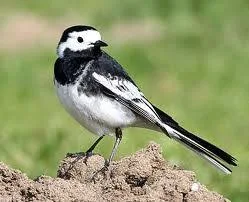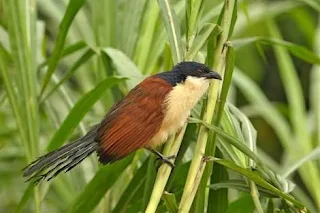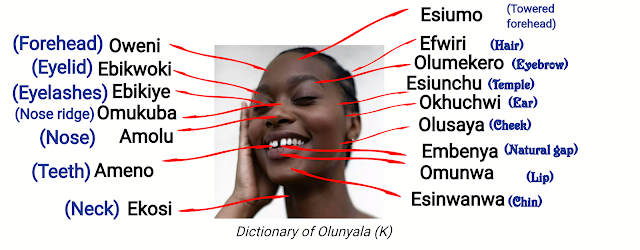ABANYALA BA KAKAMEGA: Birds that were Never eaten.
There was knowledge about edible and non edible birds among Abanyalaa ba Kakamega. This knowledge was passed on for generations as part of informal education. It is only by understanding this knowledge that one can realize that our forefathers were brighter than we thought.
Taboo birds
Some birds that were not eaten had some taboos story attached to them. Some of the taboos had great cultural or scientific reasons that served a purpose without opening up the meaning to the growing generations. However, it is worth noting that some taboos are still unravelled. The following are some of them.
b) Bird with poison ingesting eating habits
Not eaten due to their eating habits. These included, hawks, sparrows, eagles and other birds of prey. There were many types of hawks, eagles, sparrows and falcons to an extent that naming all of them became challenging. Some names became extinct with time. Eating any of them could lead to some sort of poisoning since their meat was contaminated.
Taboo birds
Some birds that were not eaten had some taboos story attached to them. Some of the taboos had great cultural or scientific reasons that served a purpose without opening up the meaning to the growing generations. However, it is worth noting that some taboos are still unravelled. The following are some of them.
- Akhayindikiri- Red warbler. It was believed that the bird could make you to be easily struck by thunder, that it made it hard for you to be lend anything at your tme of need and it could also cause your parents to separate. Indeed, the red and white colour added fear in those who would have attempted to eat it. However, the major reason behind all these was that that the bird was poisonous.

Akayindikiri - Chayuka- Red tacked mannikin. That it lead to growth of ringworm.

Chayuka - Chikombe- Blue flycatcher. That it brought tapeworm and ringworms. Reason is that the bird ate a lot of blue flies which contaminated its body.

Chikombe - Chwinjwini- black-white longtail wagtail. That eating it brings thunder or burning of house. Main reason was that it could make children to climb on houses to trap it since it made nests on houses. It was a taboo for children to climb on their parents' house. However, if a mother to a child separated from the father and went away, then a ceremony was held in which a child could climb on the house and call the mother back. Once this was done, it was said that the mother would always come back. If she does not come back, then it is said that her marriage elsewhere was never successful.

Chwinjwini - Echaria- Red billed oxpecker. That it leads to red eyes and makes one not to have animal wealth in future. Major reason was that it ate ticks from animals hence helping to reduce parasites. This taboo was to ensure people do not chase it from animals. It also prevented people from getting to a point of eating contaminated meat since the ticks may carry disease causing organisms.

Echaria - Efutubiri- Black railbirds. This group included all other non back railbirds group. That eating it before underfgoing circumcision made the foreskin hard to a knife cut. That eating the common black railbird leads to siring extremly black babies. The truth was that its eating habit made it meat poisonous. Only the elderly could prepare it well without food poisoning. Therefore, taboos were used to discourage the young from hunting it since it could hide in water and make them drawn.
- Ekhirikhikhi- Owl. That its presence spells calamity in the home and killing one lead to the gradual extinction of the killer's generation as time goes by. Owls of different species communicated various bad messages. For example, that a single cry meant death was to come after some time while continous call meant that a sick person in the family was soon going to die. Its eggs were also said to be lethal weapons for witchcraft and at times sold for a fortune. If it perched on a tree, fire was put in a pot and the pot put on the head as you move towards the tree. A glowing splint picked from the pot was thrown at it, the tree hit with an axe and the pot left at the base of the tree. This proved magical since the owl never come back. However, it is explained that the presence of the pot made the bird remember the chasing and not perch on the tree for the second time. The bird was hated to the core- the major reason is that the bird is poisonous due to eating habits. Also, killing one would always make its partner to be coming around, with loud calls, in search of the dead patner. However, there were some mythic connection with calamity that still holds to date.

Ekhirikhikhi - Ekhofwa- Pied crow. That eating it made one talkative, rude, lazy, abusive and greedy.

Ekhofwa - Emande- Cattle egret. That eating them lead to reduction in animal wealth. Major reason was that they ate ticks from animals reduceng the attack from deseases.

Emande - Embirikong'o- That eating it was inviting a snake bite to members of the family.

Embirikong'o - Engosia- Vulture. That eating it was same to inviting ghosts and evil spirits. That it ate human body, starting with the eyes, and it was contaminated with varieties of evil spirits. Its sighting became a communial collective responsibility to chase it back to the forest. If it perched on a house, a cleansins sacrifice was made for it was believed the spirit of death was with it. Indeed, long ago befor the start of 1800 ACE, people were thrown in the forests and only the bones collected in a ceremony called okhukosa amakumba (returning bones).

Engosia - Eng'ulu- Southern Cossway. That its presence spelled impending death, attack by evil spirits, war or feud over leadership. Its presence was followed by the sounding of a drum for community hunt until it was killed. After killing, a sacrifice was made. That the bird could attack and even kill children. The main reason was that the bird was canibalistic and could eat babies, animal kids and even calves. The bird is almost extinct. At times it was refered to as eng'u elya wututu.

Eng'ulu - Epata ekhonge- That eating it would make one to become a widow early in life upon marriage. Most of the amayoyo were suppossed, as a taboo, to be kept in the home for some time before being roasted. They were never boiled before long roasting. The major reason is that the bird is poisonous. The domestication ensures some control over what the bird ate.

Ebata ekhonge - Esembe- African Sacret Ibis. It was believed that it was a messanger from God in relation to fertility- Were Nasaaye. That if it was made happy, then a childless woman in the community was going to give birth.

Esembe - Esikhokhochole- African black swift. It is a fast flying bird that lives in mountain areas. Likes flying up in the sky and displaying stationary wing flapping and open tail end dance called wachacha dance. It was not eaten; only the feathers were taken. Killing it was same to aborting ones luck. Its feathers were believed to bring good luck.

Wachacha - Esombafwiri- Yellow billed oxpecker. Same to redbilled oxpecker in mannerisms but with yellow bills. They plucked tickds and lifted their head unlike the red billed oxpecker which did not lift the head for long. It was not eaten because it was believed it plucked and ate animal hair. Eating it could bring disaster to the family. The real truth was that the bird fed on poisonous insect and ticks from various wild animals.

Esombafwiri - Ewang'i- Crowned crane. Their presence showed good leadership, their presence in village made girls from that village to be successful in mariage and it also pointed towards general proserity of the community. Howecver, the major reason may be that killing one could lead to other birds coming to do physcal mourning for days. The bird has been observed to carry out physcal burial of their member amid a strange dance-chant.

Ewang'i - Murutu- shoebill. That if it perched on a house, then it had to be chased away or killed. If killed, then a sacrifice had to be made. It produces sound like a firing machine gun ruututu.

Wututu - Muyuti- Bronze mannikin. It caused ringworms and tapeworm. The effects were same to those of chayuka and titingole.

Muyuti - Nafunioko- That eating it brought tapeworms, sleeping during the day and too much bleeding at circumcision time for boy. That since it swings its head up and down; those who ate it turned into 'yes men' and 'yes women.' Reason was that it fed on blue dirty flies hence could cause infections.

Nafunioko - Nalunikho- African spoonbill- That eating it lead to marrying a wife less skilled in cooking. Since it did solidary hunting, it was associated with divorce.

Nalunikho - Nalutondo (embiri)
- Namapunda- shriek thrush. Eating it made one to give birth to children with scally skins and big pimples.The major reason was that the bird's meat was naturally poisonous. Its shriek is what distinguished it from other birds that were similar to it.

Namapunda - Namulobi- African darter. It is almost similar to namunakha but has a strange curved wing during flight. That eating it is akin to welcoming snakes into your home.

Namulobi
- Namuningie- Hammercorp. That eating it lead to instability in marriages in families- especially if the nest is destroyed or burned. Reason was that its meat accumulated poison due to its feeding habits.

Namuningie - Namung'aang'a- African Grey hornbill. That eating it lead to marriage to a noisy partner just like the hornbill.

Namung'aang'a - Namuyuke- hooded polloi. It lead to gradual blindness and memory loss when you touch on it. Eating it was said to bring madness. The truth was that this bird is very poisonous and it causes serious skin irritations.

Namuyuke
- Namwesing'ong'i- Brown pelikcacan. Eating it would lead to incidences that bring sorrowfulness in a home such as death and disappearance of people. Since it was a solidary hunter, it was associated with early widowhood. The main reason was that its meat was poisonous due to its eating habit. The name comes from the verb okhwesing'ong'a which means to stand and push head backward.

Namwesing'ong'i - Namwidwidwi. Blue headed crucol. That eating it made one to be lazy, caused gradual blindness and could make one prone to thunder strike. It was associated with rain. That it could also lead to prolonged drought if its eggs are left to 'dry' due to the death of the bird that lay them. Reason was that their call and behaviour helped farmers prepare farms. Accidentally killing one was followed by paying a chicken to a known rainmaker for cleansing.

Namwidwidwi - Nangosia- Marabou Stork. Eating it was same to beckoning laziness, evil spirits and ghosts. The major reason is that its eating habits made it poisonous.

Nangosia - Oluwukawuka- Nightjar. That eating it lead to one being prone to commiting serious crimes in society. If it hits itself on a person, then it was premonition for calamity or good luck basing on whether it came from the back or front. The major reason was that the bird was very helpful for its functional night call which was used for security purposes. For example, it produced different calls: for incoming intruder in village, standing enemy and outgoing enemy.

Oluwukawuka - Opichapicha- Barn swallows. That eating those that nest on the house was same to bring poverty.

Opichapicha - Simbikhira- That eating it while young made one to develop loose sexual morals. The major reason was fear of it perceived medicinal and feather value which was being protected.

Simbikhira - Titingole- Black and white mannikin. That eating it lead to tapeworms and ringworms. The reason was same to that for muyuti and chayuka.

Titingole - Wefweko- Red Chested Cackoo. Its cry was a premonition for death in the home. This taboo seem to be alive in some families today. For voice call from the bird: https://youtu.be/-jrOC-lQpsY

Wefweko - Wututu- Southern ground hornbill. Its presence was associated with impeding death or calamity. It was said that it ate babies starting at the level at the stomach and eye.That its presence was associated with death- that it smelled dead bodies' scent before it got rotten to be felt by humans nose- one can be alive yet smelling of death. That if an uncircumcised boy saw this shy looking bird, he had to take off without looking back before it turned away to point the protruding fearthers on its head at him. It was also associated with thunder.

Wututu - Nn
b) Bird with poison ingesting eating habits
Not eaten due to their eating habits. These included, hawks, sparrows, eagles and other birds of prey. There were many types of hawks, eagles, sparrows and falcons to an extent that naming all of them became challenging. Some names became extinct with time. Eating any of them could lead to some sort of poisoning since their meat was contaminated.
- Amachakwi- Mallard ducks- they were violently chased away any moment they appeared. They were in pairs of two different colours. Now almost extinct.

Amachakwi - Amakholi- sea eagle. The sea was called enyanja yicha amakholi (a lake that kills sea eagles)

Amakholi - Ekhwaasi- African hurrier hawk and African Buzzard eagle. Its name is from the word okhukhwasia which means to take everything for yourself.

Ekhaasi - Ekhongocha- African red kite.

Ekhongocha - Enduchu- Martial eagle. This was a big eagle similar to enduchu but with white belly. It sight was greeted with wails and hunting. It took away calf.

Enduchu - Engwasule- Secretary Bird. It has long legs. It kills snakes by kicking it with powerful legs and eats it on ground before flying off.

Engwasule - Eruchu- African Crowned Eagle. Very strong bird. The origin on "Nambengere Naukhamba; Nambengere Nauruchu" slagon by the Abaengele. You don't joke around with ladies from Abaengele- they are become masculine when need arises.

Eruchu - Esikupi- Great sparrow hawk (white stomach). Esikhupi means that which moves first and beats its target.

Esikhupi - Esiricha- Used for the larger species of the great sparrow hawk and the Mountain Buzzard. Like esikhupi but slightly bigger.

Esiricha - Kisule- Long crested hawk. Kisule is named afer the crest on its head.

Kisule - Nalulere- Black African Kite.

Nalulere - Namunakha- Blue-headed heron, grey heron or Purple heron.

Namunakha - Namukhooli- Night Heron
- Namwereri- the Great White pelican
- Namwondondo- woodland kingfisher

Namwondondi - Okingiri- curlew

Okingiri





Great learning for me. Just found out that there's much to learn about my banyala culture
ReplyDelete